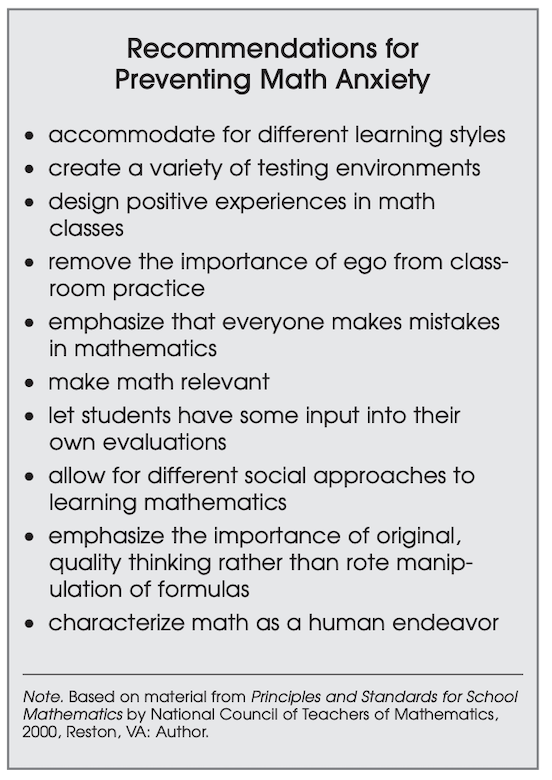Math anxiety affecting math experience
Learning is the part of studying, The more you love, the less fear that you have!
ACTIVITY
“Do not worry about your difficulties in mathematics. I can assure you mine are still greater.” – Albert Einstein
“Mathematics is not about numbers, equations, computations, or algorithms: it is about understanding.” – William Paul Thurston
Thank you for visiting my website.
Math is one of those subjects that comes naturally to some people but presents a significant challenge to others. Whether you're a math teacher, a parent, or a student in need of assistance, the internet is a wealth of information. We've compiled a list of the best teacher-recommended math websites, complete with games, videos, lessons, and even full curricula. There's something for everyone here!
MatheWhat about Math? How can we make it fun?
Mathematics is a game played according to certain simple rules with meaningless marks on paper.
— David Hilbert
Please don't be afraid!
Mathematics is the result of mysterious powers which no one understands, and the unconscious recognition of beauty must play an important part. Out of an infinity of designs, a mathematician chooses one pattern for beauty’s sake and pulls it down to earth. — Marston Morse, an American mathematician
How do you feel when it’s time for Math?
It's time for math again. Your heart begins to race, the knot in your stomach tightens, your palms become clammy, self-doubt and fear of failure weigh you down, and a sheet of unanswerable questions stares you in the face. Math anxiety is real.
This fixed mindset is familiar: I can't do the math, I don't like math, it's too difficult, and I'll never use it in the "real world."
Students express such dislike and contempt for mathematics that even teachers begin to believe it. As an educator, you play a crucial role in removing the stigma associated with math anxiety.
Why cause math anxiety?
Causes of Math Anxiety
According to Furner, & Berman, B. T. (2003) Math anxiety has many causes. Negative biases may develop if parents have a negative attitude or limited math experience. Lower socioeconomic status may mean the family hasn't had the education and experience to promote a positive math attitude. Anxiety teachers and parents can pass on their fear of the subject to the next generation by modeling their own discomfort (Kutner, 1992). Teachers and the school system can also be harmful (Hackett, 1985). According to Oberlin (1982), assigning the same work to everyone, going through the book problem by problem, giving written work every day, insisting on only one correct way to complete a problem, and assigning math problems as punishment for misbehavior can cause math anxiety. Other causes include students relearning what they've already learned and a lack of exposure to the material's everyday applications (Brush, 1981). (Furner, & Berman, 2003)
It is extremely difficult to pin down a specific reason for a person's fear of mathematics. The perception that children have of mathematics is susceptible to being negatively impacted by a wide variety of factors beginning at an early age.
Take a moment to reflect on your direct or indirect experience with math anxiety, the factors that contributed to it, and the times when it manifested itself.
It's possible that other students made fun of you after you gave an incorrect answer to a question; it's also possible that your teacher did a poor job of teaching it, or it could have been your parents' negative attitude toward math.
Preventing or Reducing Math Anxiety
According to Furner, & Berman, B. T. (2003) it stated teachers and parents can play an important role in assisting children in developing positive attitudes toward mathematics. NCTM's (1989, 1995b) recommendations for teachers seeking to reduce math anxiety include the following:
* Supporting different learning styles
* Developing a number of testing environments
* Creating positive math classroom experiences
* Refraining from tying self-esteem to math success
* Emphasizing that everyone makes math mistakes.
* Making maths interesting
* Allowing students to contribute to their own evaluations.
* Allowing for various social approaches to mathematics learning
* Emphasizing the importance of original, high-quality thinking over rote formula manipulation
* Describing mathematics as a human endeavor.
The approach recommended for reducing math anxiety differs from that recommended for preventing math anxiety. Teachers almost have to take on the role of a counselor to help students overcome their fear of math. Math anxiety treatment options include systematic desensitization and relaxation. According to Furner and Berman (2003), relaxation should be used in conjunction with repeated positive messages and visualizations.
Permana, Amry, & Mulyono (2020) stated that each individual is distinct from the others. These differences range from physical differences to thinking patterns and ways to respond to or learn new things. In terms of learning, each person has advantages and disadvantages when it comes to absorbing the lessons provided. As a result, various methods of education are known to be capable of meeting the demands of individual differences. (Permana, Amry, & Mulyono (2020)
Therefore Saputra, Minggi, & Djadir. (2021) stated that every student has a distinct learning style. In other words, no learning style is superior to another. Knowing their appropriate learning styles is important because every student will absorb information more easily. By identifying a dominant learning style, each student will be better able to determine a more effective learning method. As a result, each student can maximize their learning abilities, resulting in optimal learning outcomes. (Saputra, Minggi, & Djadir, 2021)
Here again, According to Furner, & Berman, B. T. (2003), teachers and parents can play a significant role in fostering positive attitudes toward mathematics in children. NCTM's (1989, 1995b) recommendations for teachers seeking to reduce math anxiety include the following: Supporting different learning styles, and this would be the answer to my question about a practical problem for my website.
My problem of practice question is “What are your learning styles? How can I assist students in reducing math anxiety while also taking their learning styles into account?”.
I would explain the relationship between supporting students' learning styles and reducing math anxiety for teachers/students and anyone who dislikes working with a math problem. We cannot predict how students will learn, but we expect them to learn what they need to know in terms of how to perform mathematics in a way that makes them anxious. This is because we do not present mathematics in a way that gives students understanding and significance. Hence, we expect students to learn how to perform mathematics in a way that makes them anxious. Worksheets containing only numbers could be stressful for a more visual student, for instance, because they prefer to work with pictures. This is because students anticipate seeing things they can manipulate with their hands and see with their eyes as visuals, in addition to objects that can be touched using their hands. Any tool that does not require a mathematical meaning can be considered a visual tool. This includes pencils and other readily available materials.
Sloan (2002) stated that all learners could learn math, but some don't learn well in the traditional way (Tobias, 1993). Global learners sometimes struggle in math classes emphasizing sequential, step-by-step, deductive, and rule-based instruction (Oxford & Anderson, 1995). Previous research suggests that other learners may also experience math anxiety (McCoy, 1992; Onwuegbuzie, 1998). Dunn (1978) found that students learn faster when teachers cater to their learning styles. Preservice teachers may learn more about learning styles from college instructors. Preservice teachers can build a repertoire of instructional strategies based on learning styles. Preservice teachers who recognize students' learning styles may reduce math anxiety (Sloan, 2002)
Are you ready to have fun and learn Mathematic with your learning style?
Please check out the next page for your learning style to achieve confidence in math!
You Can Do It!
References:
Furner, & Berman, B. T. (2003). Math anxiety: overcoming a major obstacle to the improvement of student math performance. Childhood Education, 79(3), 170–.
Math in Nature Image. (n.d.). Retrieved from https://www.goodandbeautiful.com/wp-content/uploads/2021/09/Math-in-Nature-01-1-640x422.jpg.
Nisbet, J. (2019, March 8). Overcoming math anxiety: 12 evidence-based tips that work. Prodigy Education. Retrieved May 22, 2022, from https://www.prodigygame.com/main-en/blog/math-anxiety/
Permana, R. I., Amry, Z., & Mulyono. (2020). Influence of visual, auditory, kinesthetic learning style on the ability of troubleshooting e-learning-based math. Journal of Education and Practice. https://doi.org/10.7176/jep/11-18-20
Saputra, Minggi, I., & Djadir. (2021). The Identification of the Concept Understanding on Limit of Functions Based on Students’ Learning Styles in Mathematics Department at FMIPA UNM. Journal of Physics. Conference Series, 1899(1), 12130–. https://doi.org/10.1088/1742-6596/1899/1/012130
Sloan. (2002). Mathematics Anxiety and Learning Styles: What Is the Relationship in Elementary Preservice Teachers? School Science and Mathematics., 102(2), 84–315. https://doi.org/info:doi/
TED-Ed. (2017). Why do people get so anxious about math? - Orly Rubinsten. YouTube. Retrieved August 20, 2022, from https://youtu.be/7snnRaC4t5c.


